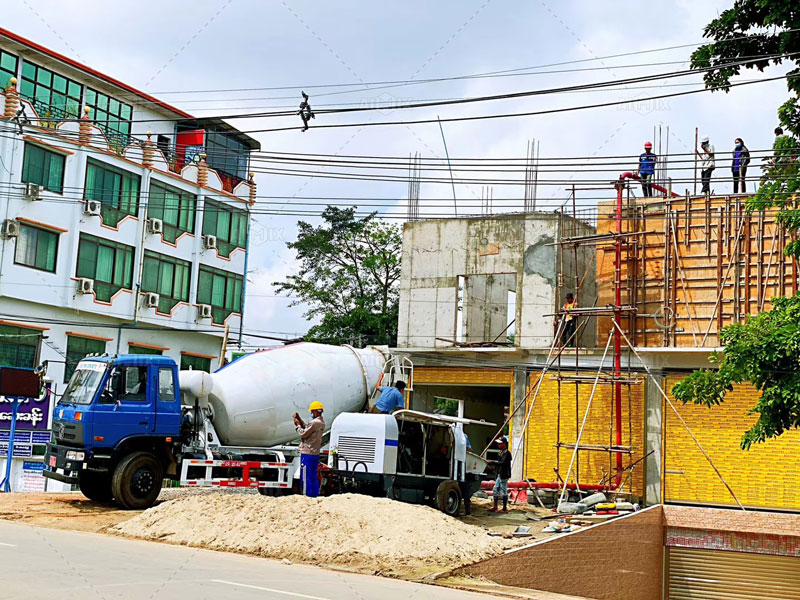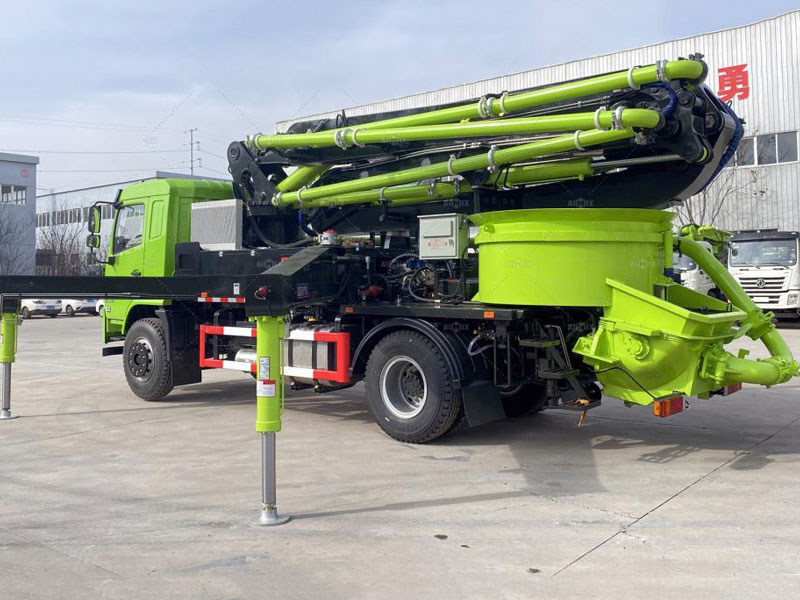The demand for finished concrete has been steadily increasing, driven by booming infrastructure and construction projects worldwide. As construction industries grow and the need for efficient concrete placement intensifies, the question arises: will the demand for finished concrete lead to higher prices for concrete pump for sale and other pumping equipment? In this article, we explore the relationship between concrete demand and the cost of pumping machinery, including concrete pump, concrete mixer pump, and concrete pump truck.
How Increasing Concrete Demand Affects Equipment Prices
The construction industry is currently experiencing a surge in demand for finished concrete due to rapid urbanization, infrastructure development, and residential construction projects. As more concrete is needed for large-scale projects, there is a direct impact on the equipment used to transport and pump this concrete. Concrete pumps(venta de bomba de concreto) and related equipment are essential for efficiently moving and placing concrete at the construction site, especially in areas that are hard to access or require precise control over concrete placement.

1. Increased Demand for Concrete Pumps
As the need for concrete grows, contractors are increasingly relying on high-performance concrete pumps to meet the rising demand. This leads to higher competition for these machines, especially for advanced models like concrete mixer pumps and concrete pump trucks, which offer greater efficiency and versatility. With more construction projects underway, manufacturers may raise the prices of these pumping systems due to higher demand and production costs, reflecting the increased need for these vital tools.
2. Impact on Supply Chain and Manufacturing
The global supply chain for construction equipment, including concrete pumps, faces numerous challenges, such as fluctuating raw material costs, labor shortages, and manufacturing delays. As the demand for concrete pumps(bomba de concreto) increases, manufacturers may struggle to keep up with orders, resulting in longer delivery times and, potentially, higher prices. This, in turn, affects the overall cost of concrete pump for sale units as supply chain disruptions push up the price of raw materials and finished goods.

Factors That Influence the Cost of Concrete Pumping Equipment
Several factors play a role in determining the price of concrete pump equipment, and they are often tied to the demand for finished concrete. These factors include technological advancements, market competition, and material costs.
1. Technological Advancements in Pumping Equipment
Modern concrete pump models come with various technological improvements that make pumping more efficient and cost-effective. Features like remote control operation, advanced hydraulic systems, and energy-efficient designs can drive up the price of new equipment. As the construction industry demands more powerful and efficient machines to meet the growing need for concrete, manufacturers may incorporate these innovations into their models, leading to higher prices. As a result, contractors and buyers who are looking for advanced concrete mixer pumps(bomba hormigonera) or high-capacity concrete pump trucks may see increased costs due to technological upgrades.
2. Market Competition and Pricing Dynamics
The competition among equipment manufacturers is also a key factor in determining the price of concrete pump for sale. When demand for pumping equipment is high, companies may raise their prices, knowing that contractors need the machines for their ongoing projects. However, strong competition can also keep prices in check, especially if multiple manufacturers offer similar products. The balance between supply and demand in the concrete pumping market will directly impact the prices of these machines.
3. Raw Material Costs and Manufacturing Expenses
As demand for finished concrete increases, so does the demand for the raw materials used to produce concrete pumps, such as steel, rubber, and hydraulic components. These raw materials are subject to market fluctuations, which can have a significant impact on the price of the equipment. Additionally, labor costs, transportation fees, and other operational expenses contribute to the overall cost of manufacturing concrete pumping machines. When the prices of raw materials rise due to increased demand or supply shortages, manufacturers often pass on these costs to the consumer, resulting in higher prices for equipment like concrete mixer pumps and concrete pump trucks.
How Growing Demand for Concrete Impacts the Global Market
The increasing demand for concrete is not limited to any specific region. It is a global trend, fueled by construction booms in emerging markets, infrastructure projects, and urbanization. As a result, the global market for concrete pumping equipment is witnessing a shift in pricing trends.
1. Regional Price Differences
The price of concrete pump equipment varies by region, depending on local market conditions and the availability of machinery. In regions where construction is booming—such as Latin America, Asia, and Africa—demand for concrete pumps is high, and equipment prices may rise accordingly. Conversely, in regions with slower economic growth, the demand for new concrete pumping machines may not be as significant, leading to more stable pricing. Global supply chains also play a role, with prices in certain countries being affected by currency fluctuations, import taxes, and tariffs.
2. Impact on Small Contractors and Emerging Markets
As the price of concrete pumping equipment rises due to increased demand, smaller contractors or those in emerging markets may find it difficult to afford the high cost of new concrete pumps or concrete pump trucks(autobombas de hormigon). To cope with these higher costs, many smaller companies turn to the used equipment market, which offers more affordable options. However, buying used equipment comes with its own set of risks, such as potential wear and tear and limited warranty coverage. As a result, some contractors may face challenges in accessing reliable and affordable pumping equipment, hindering their ability to compete in a growing market.
Conclusion
The growing demand for finished concrete is indeed influencing the price of concrete pumping equipment. As construction projects increase globally, the demand for concrete pumps, concrete mixer pumps, and concrete pump trucks will continue to rise, putting upward pressure on equipment prices. Factors like technological advancements, market competition, and raw material costs all play a role in determining the price of these essential machines. Contractors and companies must stay informed about these price trends to make cost-effective decisions when purchasing or renting concrete pumping equipment for their projects.